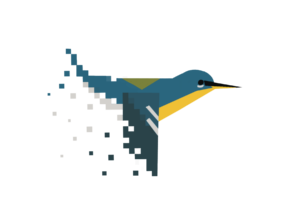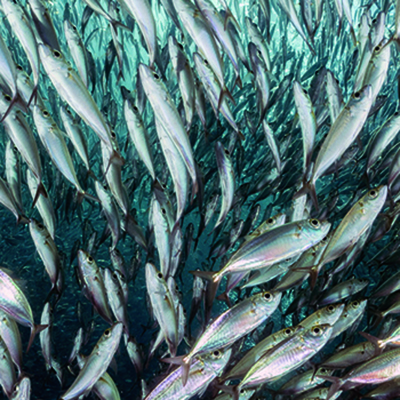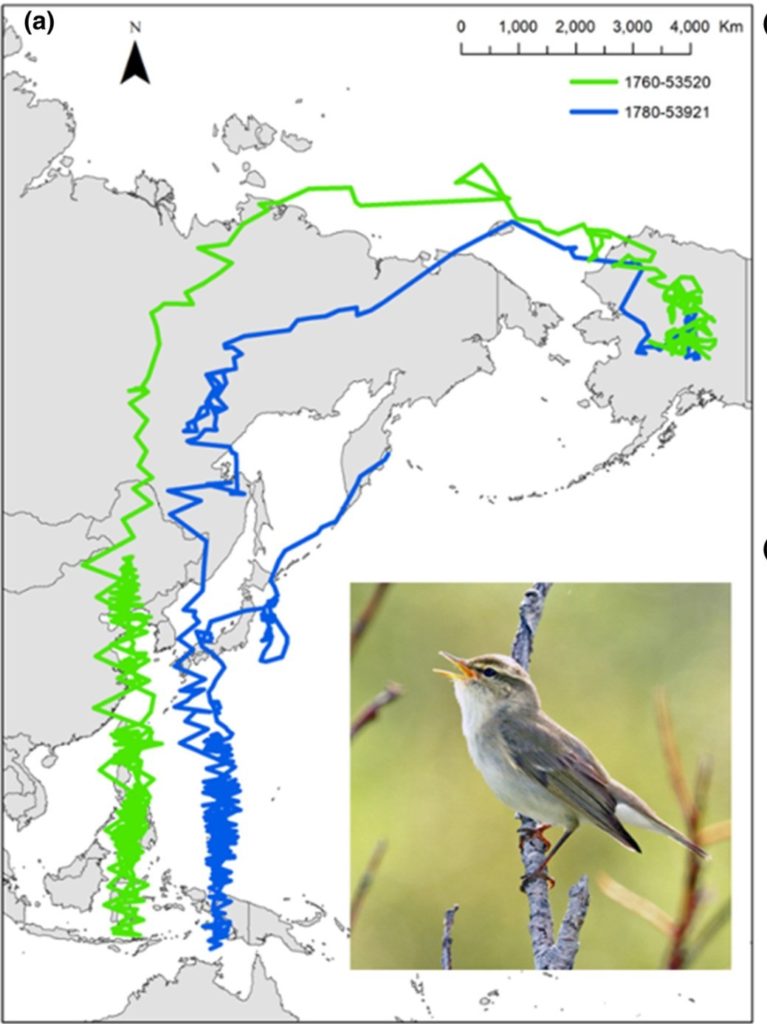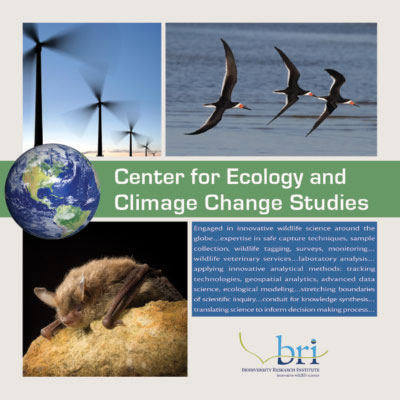Gaining Insight into Ecological Processes

Ecosystems, the foundations upon which life is structured and interconnected, are complex and ever-changing. BRI’s Quantitative Wildlife Ecology Research Lab (QWERL) aims to answer important ecological questions with sophisticated analytical methods such as data integration, species distribution models, and movement modeling.
Our research focus is on wildlife spatial ecology, but we extend our work into other areas (e.g., trophic ecology, community ecology, and population modeling). Once we have gained insight into these ecological processes, we communicate results to appropriate audiences using a variety of visual and descriptive tools (e.g., maps, graphs, tables). We recognize that the best science includes a collaborative effort among researchers, resource managers, policy makers, and others to maximize its usefulness across these groups.
Featured Project: Eastern Whip-poor-will Research. The Maine Natural History Observatory has partnered with the Maine Department of Inland Fisheries and Wildlife and BRI to expand the study of Maine’s nightjars including the Whip-poor-will. The primary objective of this project is to complement ongoing monitoring initiatives by collecting essential data in these areas of Whip-poor-will ecology.
Recent News:
 New paper, “Surface and subsurface oceanographic features drive forage fish distributions and aggregations: Implications for prey availability to top predators in the US Northeast Shelf ecosystem” published in Ecology and Evolution. This paper discusses results from the application of Bayesian joint species distribution models to bottom trawl survey data to assess species- and community-level forage fish distribution patterns across the US Northeast Continental Shelf (NES) ecosystem. Read the full paper here.
New paper, “Surface and subsurface oceanographic features drive forage fish distributions and aggregations: Implications for prey availability to top predators in the US Northeast Shelf ecosystem” published in Ecology and Evolution. This paper discusses results from the application of Bayesian joint species distribution models to bottom trawl survey data to assess species- and community-level forage fish distribution patterns across the US Northeast Continental Shelf (NES) ecosystem. Read the full paper here.
___________________________________________________________________________________________________________
 BRI researchers, as part of a long -term collaboration with the National Parks Service, have provided the first documentation of the migratory routes and wintering locations of two territorial adult male Arctic Warblers from Denali National Park and Preserve, Alaska. This study was carried out as part of the National Park Service’s Critical Connections Program and has been published in Ecology and Evolution. Read the full paper here.
BRI researchers, as part of a long -term collaboration with the National Parks Service, have provided the first documentation of the migratory routes and wintering locations of two territorial adult male Arctic Warblers from Denali National Park and Preserve, Alaska. This study was carried out as part of the National Park Service’s Critical Connections Program and has been published in Ecology and Evolution. Read the full paper here.
Goals of QWERL

- Conduct research to better understand the spatial ecology of animals, particularly how environmental change affects their movement, distribution, and status,
- Develop and refine methods to analyze ecological data that appropriately account for biases in data collection,
- Account for uncertainty in all our measures so the results can be interpreted and applied effectively, and
- Create tools and products that allow our results to inform critical environmental decisions and educate the general public.
BRI’s Research in this Area
Movement Ecology
Understanding animal movement patterns can provide key insight into their behavior, habitat use, and population dynamics. We use data loggers including geolocators, radio transmitters, and satellite transmitters to describe where animals go and how they behave. Using multistate modeling, we can improve our understanding of environmental drivers of behavioral change and inform full life cycle conservation decision making.
Community Ecology
Animals interact with their environment and with other species; these interactions can impact survival, reproduction, competition, and other population dynamics. By integrating data across multiple taxa, we can describe community dynamics, such as marine predator-prey relationships and their influence on movement and habitat use, or songbird competition for resources and the influence on breeding distributions.
Species Distribution and Status
Understanding where animals are found, how they use the environment, and how these factors change are crucial to conservation efforts. We focus on research that integrates data over multiple spatial and temporal scales to describe these patterns and how they impact demographic rates.
Environmental Risk Assessment
Environmental changes can affect animal populations on global and local scales. By incorporating myriad data into risk assessment frameworks, we can assess the impacts of stressors, such as contaminants or development, on key species.
Decision Science
In order for data to be used to inform decisions and improve conservation outcomes, effective communication and engagement with decision makers is critical. We coordinate stakeholder meetings and utilize translational ecology principles to ensure that research is focused on real-world problems and outcomes are effectively presented to scientists and nonscientists alike.
Projects and Products

- Maine Bird Atlas
- Marine predator-prey interactions
- Offshore automated telemetry
- GoMAMN
- Offshore risk assessment
- RPBO data explorer
- Mercury risk in migratory birds
- Mid-Atlantic Diving Bird Study
- New York mercury synthesis
- Mid-Atlantic Baseline Studies



